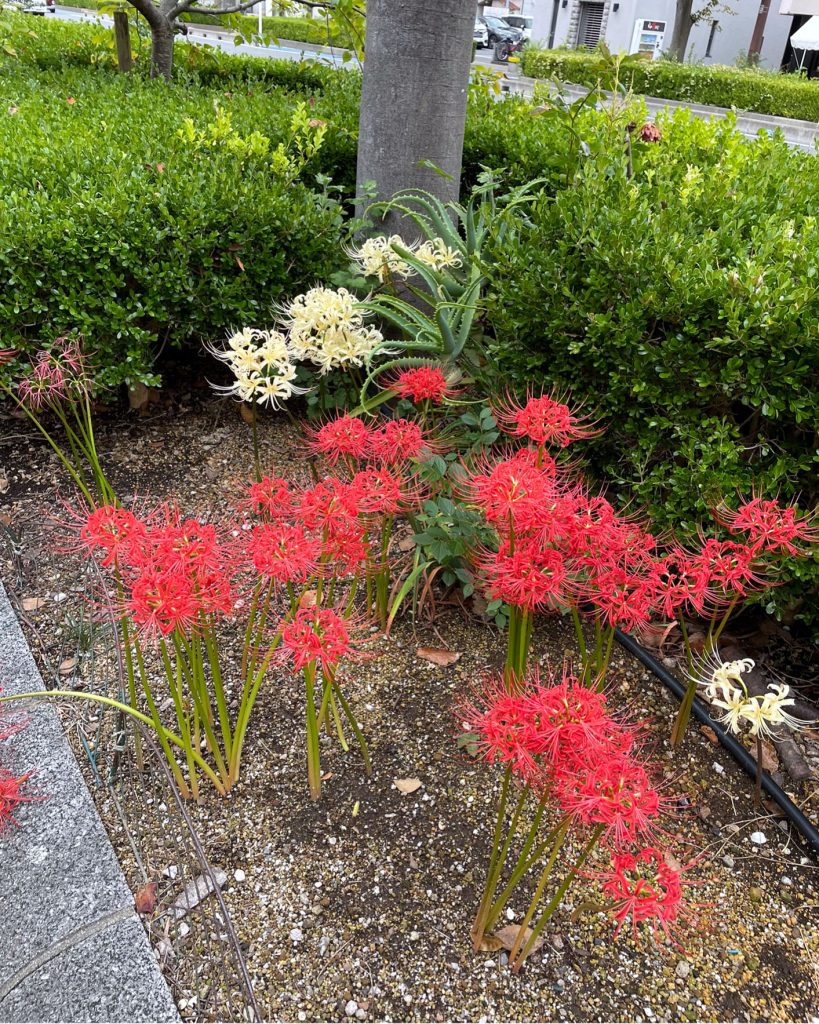
It is now the “mizu hajimete karuru” (water begins to dry up) period of the autumnal equinox. This means that it is the time to drain the water from the rice fields and begin harvesting the rice. It’s about the time that the higanbana (the spider lilies) that were blooming in the ridges also wither. However, the higanbana that are blooming in the hedges along the sidewalks are in full bloom. It seems that this is the case everywhere in Japan. Higanbana will not bloom unless the temperature is below 25 degrees Celsius. Since the time of the equinox, it has been a series of hot days and summer days. The temperature has started to drop below 25 degrees Celsius in the morning and evening in the past week. This must have been the condition for the higanbana to bloom, and they have bloomed two weeks late. As this high temperature phenomenon is likely to continue every year, we need to find a new higanbana. And we need to give a new name to the current higanbana. We might as well change the calendars and seasonal almanacs that we have been using to something completely new.
今は秋分の末侯「水始涸 (みずはじめてかるる)」 です。「田んぼの水を抜き、稲穂の刈り入れを始める頃」と言う意味です。畦に咲いていた彼岸花も枯れる頃です。でも、歩道の生垣に咲く彼岸花は満開です。全国どこともそうらしいです。彼岸花は気温が25°以下にならなければ咲きません。お彼岸の頃からこっちは真夏日と夏日の連続でした。ここ一週間前辺りから朝晩の気温が25°を下るようになりました。これで彼岸花の咲く条件が揃い、2週間遅れの満開となったのでしょう。これからも毎年この高温現象が続くでしょうから新しい彼岸花を見つけねばなりません。そして今の彼岸花には新しい名前を付けねばなりません。いっそのこと、今まで使ってきた暦や歳時記も全く新しいのに変えたらどうでしょうね。
